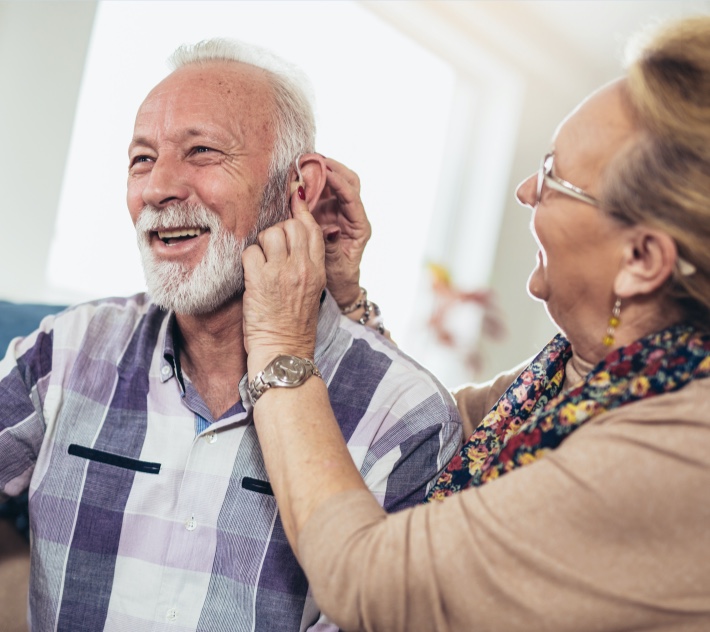
How do we Hear?
Hearing is a vital way in which we interpret the world around us; from conversations with loved ones, to listening to traffic as we cross the road, to singing along to music.
But how does hearing work? In order to understand this, we need to first understand the ear’s anatomy.
Our ears are made up of three parts: outer, middle and inner.
Parts of the ear:
- The outer ear, including the pinna (external ear) and ear canal
- The middle ear including the eardrum and ossicles
- The inner ear consisting of the cochlear and the auditory nerve
The only visible part of our ear, the pinna, is specially shaped and acts as a funnel for sound, channeling it into the ear canal. The pinna is made of cartilage covered with skin.
Without the pinna, how we hear would be very different. Sounds would be very harsh, hitting the ear canal directly. The pinna also serves as an intermediary between the higher pressure inside the ear where sounds are more compressed, and the lower pressure outside the ear.

How do we hear sound? Once soundwaves have entered our ear canal via the pinna, they travel to the eardrum, making it vibrate.
From here the vibration is sent through three tiny bones or ossicles ( the malleus, incus, and stapes) in our middle ear.
These bones bump the membrane window of the cochlea, making the fluid inside move. This movement then triggers a response in the hearing nerve, sending the vibration to our brain to be interpreted as sound, and that’s how we hear!

Ears and Balance
It is easy to take our sense of balance for granted, but it is vital to so many different parts of our lives, including walking, running, and generally moving without falling. While your brain receives signals from all over your body in order to allow you to balance, including your eyes, skin, muscles and joints, your ears play a massive part in sensing gravity and relaying this information to your brain.
In your inner ear are three “canals”, these contain fluid (also known as endolymph) and sensors, in the form of hair cells, which detect rotational movement. The three canals are semicircular in shape and sit at right angles to one another, each one serving a different function; one detects up and down movement, one detects side to side movement and the other senses tilting movements. The fluid in our ears moves as we do, is detected by our hair cells and these messages are sent to our brain giving us our sense of balance. Not only do these systems alter how we hear, but how we move around and interact with the world.
With damage to your ears manifesting itself in a variety of ways, from mild tinnitus to profound deafness, it is really important to do whatever you can to protect your hearing.
Prevention is better than a cure and some simple ways to avoid hearing loss include:
- Use hearing protection: Whether at a loud concert, using power tools or being in the vicinity of loud noises, it is important to either use earplugs or earmuffs to block out the noise which could damage your hearing
- Listen to music at 60% of the volume: When listening to music through headphones or earbuds, make sure you don’t have the volume at more than 60% capacity
- Don’t ignore hearing loss: If you are having trouble hearing and don’t seek treatment, it can lead to further hearing loss, diminished quality of life and even cognitive decline
- See a doctor: for any issues relating to your ears. From ear infections to balance issues, it is crucial to visit a professional to make sure any ear problems you may be experiencing aren’t serious, treat any potential progression of problems and to treat any serious issues if found.
Your Hearing Technology Experts
Most hearing loss is preventable, caused by damage to the cochlear from overexposure to loud noises, so above all, it is important to take stock of the noise level around you and take steps to avoid noise-induced hearing loss.
See your local Bay Audio store for hearing protection solutions or book a Bay Audio hearing test today.
